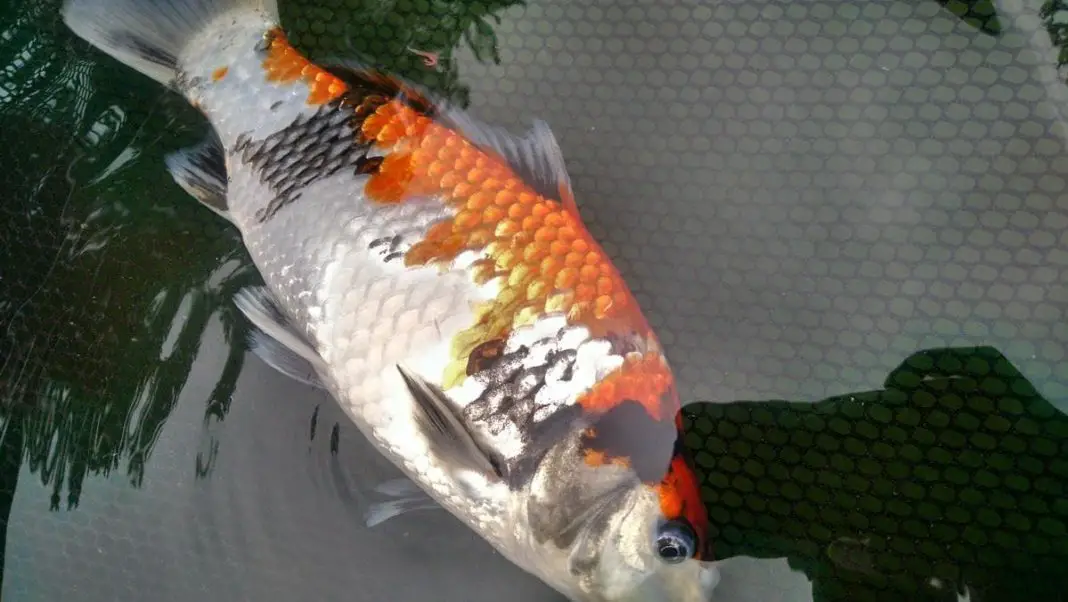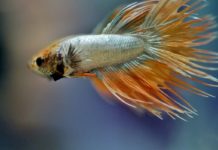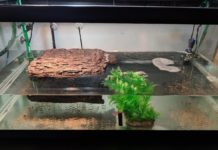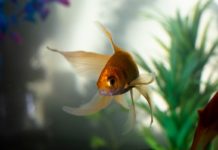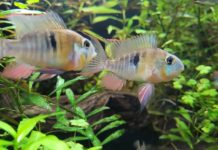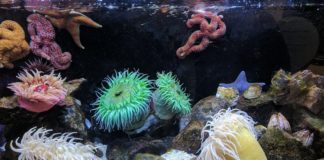Koi fish are probably among the most popular pond fish to have. It’s normal to get worried once you see unusual behavior in the pond. So, why would a Koi fish lie on their side in the pond?
The most common reason why a Koi may lie on its side at the bottom of the pond is due to a swim bladder disease, compromising its buoyancy and floating ability. However, Koi fish may also be sitting at the bottom lying on their side due to constipation, overcrowded pond, loud noises, and elevated toxins.
Why Is My Koi fish Laying On Its Side At The Bottom Of The Pond?
Koi fish aren’t bottom dwellers, therefore it’s not normal behavior for the fish to spend so much time at the bottom of the pond, lying on their side. It’s common to quickly blame this behavior on ich, a disease that causes white spots to manifest all over the Koi’s body.
While it’s reasonable to think that Ich could be the problem, a fish with ich won’t only lie on low down in the pond. It would also rub itself against the edges to combat the discomfort on its skin. The infected Koi will probably not lie still at the bottom.
However, if the Koi is merely lying on its side and you haven’t identified any symptoms supporting the presence of ich, then the following factors could be causing the problem:
1. Swim Bladder Disease
Swim bladder disease is a symptom rather than an illness disease. It’s concerned with the swim bladder, the organ that a fish uses to maintain its balance and buoyancy in the water. When a malfunction in the swim bladder’s operations happens, it compromises your Koi’s ability to control its buoyancy.
For example, a Koi can float to the top of the pond by allowing the swim bladder to fill with blood gasses. If a disease or an injury prevents the swim bladder from filling, then the Koi will remain at the bottom of the pond, unable to leave.
By using its swim bladder, a Koi is also able to balance its head’s weight and maintain a horizontal position. This is the reason for the Koi laying on its side. If a disease involves that essential organ, your Koi will probably find it hard to maintain straight and choose to lie on one side.
2. Constipation
Constipation is commonly associated with swim bladder disease; that is to say, actually constipation may cause swim bladder disease. However, a Koi can suffer from constipation without developing swim bladder disease.
But even in the absence of swim bladder disease, the discomfort and lethargy that are caused by constipation can immobilize a Koi. Therefore, they’ll eventually gravitate towards the bottom of the pond because lying on its side allows the fish to rest.
Besides lying at the bottom of the pond on its side, a Koi fish that suffers from constipation will also appear lethargic, swollen, and will feature clamped fins. The condition could be secondary to various factors, although it’s most likely due to either overfeeding or an inappropriate diet.
3. Stress
Stress will always pose a destructive influence on fish. It disrupts their health and enthusiasm, forcing them into hiding and encouraging them to remain immobile in the pond. Many believe this to be a natural survival instinct.
If the pond is overcrowded, filled with aggressive fish, or poorly maintained, you can confidently conclude that your Koi is lying on its side because of stress. In certain situations, the fish would also be breathing heavily and rapidly.
This behavior can also be a result of starved fish whose pond is situated in a noisy location. It’s important to bear in mind that fish are sensitive creatures. Therefore, it doesn’t take much to cause them physical and mental discomfort.
4. An Overcrowded Pond
As previously noted, overcrowding will induce stress in your Koi. People believe that fish will always rush to the top when their pond is overstocked. However, they’re just as likely to frequent the bottom, mainly if their pond mates have chosen to occupy the top and middle sections.
5. Elevated Toxins
Like most fish, Koi fish are vulnerable to toxins like nitrates and chlorine. One of the most dangerous is ammonia, which is a substance that’ll burn away at the gills of the fish, affecting its ability to breathe. If your Koi is not only lying still on its side but also gasping for air, then there’s a good chance that the ammonia concentration in the water is probably too high.
This typically happens in poorly maintained and dirty ponds. Fish naturally extract ammonia from their bodies, most of the time from their gills. However, if the water isn’t being replaced regularly, then the toxin will accumulate and possibly push your koi to the bottom of the pond.
7. Disease
Koi fish can be susceptible to various diseases, including flukes, velvet, and a ‘hole in the head disease. If it’s left untreated, these infections and illnesses can eventually exhaust your Koi. Once they are sapped of their strength, the Koi can simply lie on its side and drop to the bottom.
Although, diseases and infections can also involve internal organs, such as the kidneys, liver, and swim bladder. If it’s the latter that’s infected, that could directly force your Koi to the bottom, and as mentioned, will force it to lie on its side.
Treating Koi That Are Laying On Their Side?
A Koi that is laying on its side at the bottom is not always sick. It’s possible that they’re just sleeping. Other Koi are simply old and therefore require some rest. However, there’re additional signs that suggest a more dangerous prognosis.
For example, if your Koi also appears lethargic with clamped fins, then here are just a few of the solutions you can pursue:
1. Improving Water Quality
First, start by checking the quality of the water in your pond. Testing kits are very easy to get these days.
In case the pH is too low for Koi (below 7.0), or if the other toxins are too high, then it would help if you performed more frequent water changes. You can start by replacing 10-20% of the water weekly. After a while, you can bring this down to 10-20%.
Make sure to measure these parameters weekly, especially when you feel that the pond is getting dirty.
3. Mitigating Stress
You can fight stress by eliminating negative stimuli in the Koi’s environment. This includes removing aggressive fish from the pond, or by adding a divider.
4. Treating Underlying Diseases
If your Koi is laying on its side at the bottom due to a disease, the treatments you’ll be using will depend on the disease you’ve identified. For example, you can fight of a fungal infection with methylene blue.
If you have no experience with Koi diseases, you should get advice from a vet. They’ll be able to identify your fish’s disease before proposing an effective treatment.
If possible, you should treat your sick koi in a separate pond or tank. Doing this will prevent healthy fish from getting treatments they don’t need. You’ll also prevent the diseases from spreading. As a rule of thumb, it’s wise to isolate every fish that seems lethargic.
Conclusions
If your Koi is suffering from a swim bladder disease, it’ll likely lie on its side still in the pond. As constipation is one of the most common causes of swim bladder disease, it’s recommended to start feeding your Koi some peeled pees.
It would be best if to take care of the pond’s water conditions. Start by testing your pond’s water for ammonia, nitrates, and nitrites. If they’re too high or the pH is too low, then consider doing more frequent water changes.

